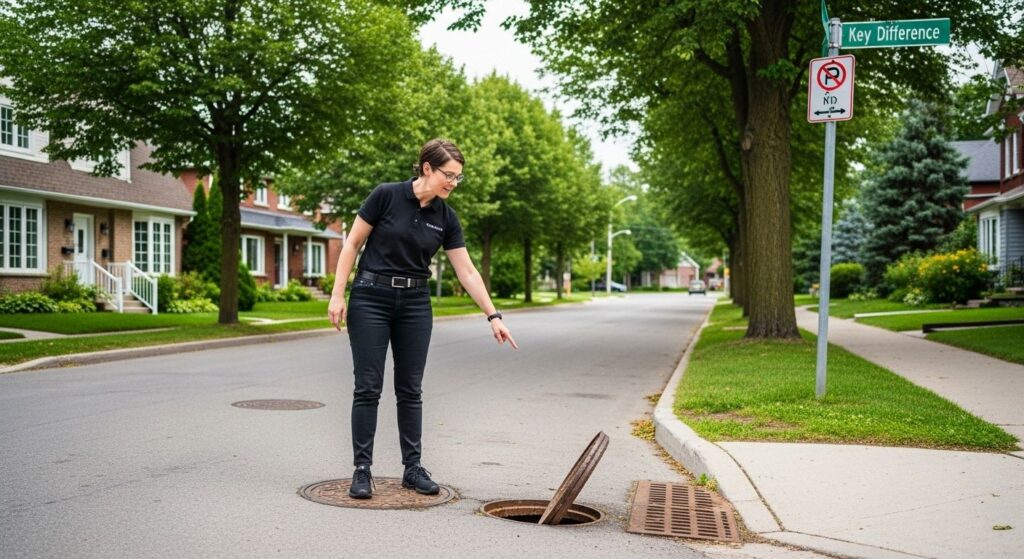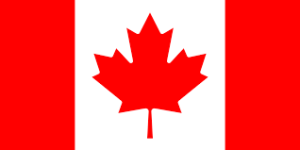Every Ottawa property relies on hidden networks to keep water in its place and problems at bay. Most people know there’s a difference between sewage and drainage, but few realize how much it matters for their homes and wallets. A single misconnection or failure can lead to thousands of dollars in damage and tank your property value. Forget the idea that all pipes are the same. Understanding the real distinction can completely change how you protect your home and the environment.
Table of Contents
- How Sewage and Drainage Systems Work
- Impacts on Ottawa Homeowners and Businesses
- Plumbing Maintenance Tips for Each System
Quick Summary
| Takeaway | Explanation |
|---|---|
| Understand sewage vs. drainage systems | Sewage systems manage wastewater, while drainage systems handle surface water. Knowing the difference is crucial for property maintenance. |
| Prioritize routine maintenance | Regular inspections and cleanings prevent costly repairs and infrastructure failures, protecting property value. |
| Follow proper disposal guidelines | Avoid flushing non-biodegradable items and harsh chemicals to protect the sewage system and ensure effective waste treatment. |
| Inspect drainage systems regularly | Clear debris from gutters and drains, especially before extreme weather, to avoid blockages and flooding issues. |
| Consider environmental impacts | Proper management of sewage and drainage systems helps minimize local water contamination and contributes to community health. |
How Sewage and Drainage Systems Work
Understanding the intricate networks of sewage and drainage systems is crucial for Ottawa property owners. These complex infrastructures play vital roles in managing water flow and waste management, yet they function distinctly and serve different purposes.
The Sewage System: A Closed Network of Waste Management
Sewage systems represent a sophisticated closed infrastructure designed to collect and transport wastewater from residential, commercial, and industrial sources. Our comprehensive guide to plumbing systems provides deeper insights into these critical networks. According to the U.S. Environmental Protection Agency, municipal wastewater systems collect domestic and industrial wastewater through a network of underground pipes that direct contaminated water to treatment facilities.
These systems handle multiple types of wastewater including toilet waste, kitchen sink drainage, shower water, and industrial process water. The primary objective is to safely transport these waste streams away from properties while preventing environmental contamination. Treatment plants employ complex filtration and chemical processes to remove harmful bacteria, chemicals, and solid materials before releasing treated water back into the environment.
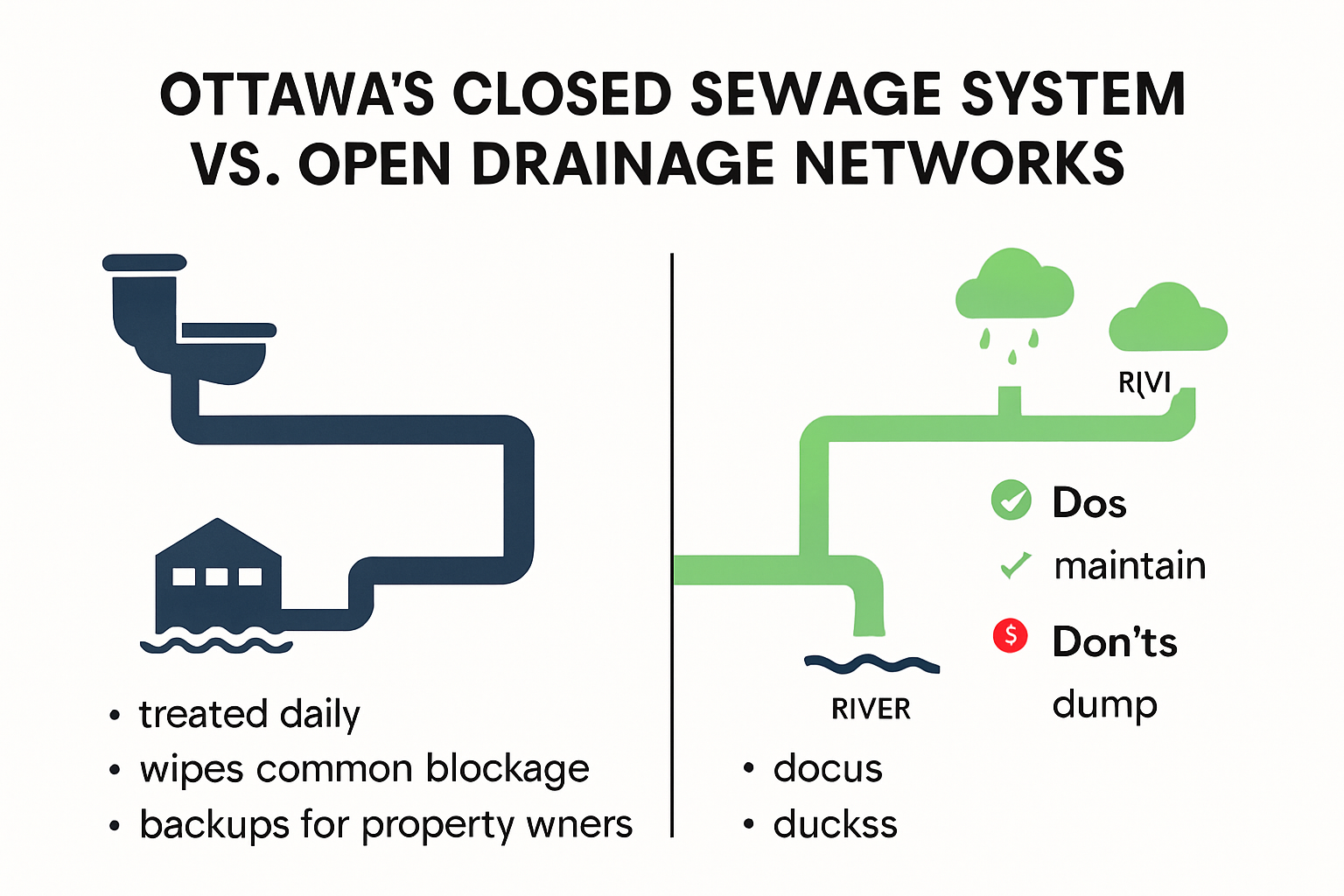
Drainage Systems: Open Networks for Stormwater Management
In contrast, drainage systems function as open networks primarily designed to manage rainfall and snowmelt. The EPA’s national guidelines highlight that these systems are engineered to channel surface water away from streets, properties, and urban infrastructure to prevent flooding and water accumulation.
Drainage systems typically include surface-level components like street gutters, storm drains, culverts, and underground pipe networks that quickly redirect water to natural water bodies such as rivers, streams, or designated retention areas. Unlike sewage systems, drainage networks do not process or treat the water they transport. Their primary function is rapid water displacement to mitigate potential water damage and erosion risks.
The key distinction lies in their design and purpose: sewage systems are closed, controlled environments focused on waste treatment, while drainage systems are open networks dedicated to managing surface water runoff. Property owners in Ottawa must understand these differences to maintain proper infrastructure and prevent potential water-related complications.
To help clarify the fundamental differences and purposes of sewage and drainage systems, the following comparison table summarizes their key characteristics relevant for Ottawa property owners.
| Feature | Sewage System | Drainage System |
|---|---|---|
| Primary Function | Wastewater collection and treatment | Surface water (rain/snowmelt) management |
| Network Type | Closed | Open |
| Sources Managed | Toilets, sinks, showers, industrial process water | Rainfall, snowmelt, surface runoff |
| Treatment Involved | Yes – water treated at facilities | No – water not treated |
| Environmental Focus | Prevention of contamination | Flood/erosion prevention |
| Typical Components | Underground pipes, treatment plants | Gutters, storm drains, culverts, drainage pipes |
| Water Discharge Location | Treated water released into environment | Redirected to rivers, streams, retention areas |
By recognizing how these systems operate, residents can better appreciate the complex engineering that protects their properties and contributes to urban environmental health. Learn more about our sewer repair services to understand how professional maintenance ensures these critical systems continue functioning effectively.
Impacts on Ottawa Homeowners and Businesses
The distinction between sewage and drainage systems significantly impacts property management, financial considerations, and environmental responsibilities for Ottawa homeowners and businesses. Understanding these systems goes beyond technical knowledge and directly affects property maintenance, legal compliance, and potential financial risks.
Property Value and Infrastructure Maintenance
Property owners in Ottawa face unique challenges related to sewage and drainage infrastructure. Research from Environment and Climate Change Canada indicates that improper sewage management can dramatically affect property values and impose substantial remediation costs. Misconnections or system failures can lead to significant expenses, potentially causing property damage, environmental contamination, and regulatory penalties.
Businesses and homeowners must invest in regular system inspections and maintenance to prevent costly infrastructure breakdowns. Professional assessments help identify potential issues before they escalate into major problems. Explore our comprehensive maintenance solutions to protect your property’s long-term value and functionality.
Environmental and Health Considerations
The impact of sewage and drainage systems extends beyond individual properties to broader community environmental health. Improper waste management can contaminate local water sources, pose public health risks, and disrupt ecological systems. Ottawa residents must understand that their individual infrastructure choices contribute to larger environmental outcomes.
Commercial properties face additional scrutiny regarding waste management. Industrial and commercial establishments must adhere to stringent regulations governing wastewater disposal, with potential legal and financial consequences for non-compliance. Businesses must implement robust systems that separate sewage and drainage networks to prevent cross-contamination and meet municipal environmental standards.
Understanding the nuanced differences between sewage and drainage systems empowers Ottawa property owners to make informed decisions about infrastructure maintenance, environmental responsibility, and long-term property management. Proactive approaches to system maintenance not only protect individual properties but also contribute to the broader community’s environmental sustainability and public health objectives.
By recognizing the complex interactions between sewage and drainage networks, homeowners and businesses can develop strategic approaches to infrastructure management that minimize risks, reduce potential expenses, and support Ottawa’s environmental integrity.
Plumbing Maintenance Tips for Each System
Maintaining sewage and drainage systems requires distinct approaches to ensure optimal performance and prevent potential infrastructure failures. Ottawa property owners must understand the unique maintenance requirements for each system to protect their investments and support community environmental health.
Sewage System Maintenance Strategies
Our regular plumbing maintenance guide emphasizes the critical nature of proactive sewage system care. According to the U.S. Environmental Protection Agency, proper sewage system maintenance involves several key practices that prevent system failures and costly repairs.
Homeowners should focus on water conservation and careful waste disposal. This includes avoiding flushing non-biodegradable items, minimizing harsh chemical usage that can disrupt bacterial balance, and scheduling regular professional inspections. The EPA recommends having septic systems professionally inspected every three to five years, with tank pumping typically required every three to five years depending on household size and water usage.
Special attention must be paid to what enters the sewage system. Cooking grease, non-biodegradable materials, and excessive chemical cleaners can cause significant damage to underground pipes and treatment components. Property owners should implement strict guidelines about waste disposal and educate household members about proper system care.
Drainage System Maintenance Approach
Comprehensive stormwater management guidelines highlight the importance of proactive drainage system maintenance. Unlike sewage systems, drainage networks require different maintenance strategies focused on preventing blockages and ensuring smooth water flow.
Key maintenance practices include regular cleaning of surface-level components such as street gutters, storm drains, and catch basins. The Centers for Disease Control and Prevention recommends specific precautions during heavy rainfall or flood conditions. These include ensuring drainage paths remain clear of debris, checking for potential blockages, and maintaining proper landscape grading to direct water away from building foundations.
Property owners should conduct seasonal inspections, particularly before winter and spring when extreme weather can cause significant drainage challenges. Clearing leaves, branches, and other organic materials from drainage paths prevents potential water accumulation and reduces the risk of flooding or water damage.
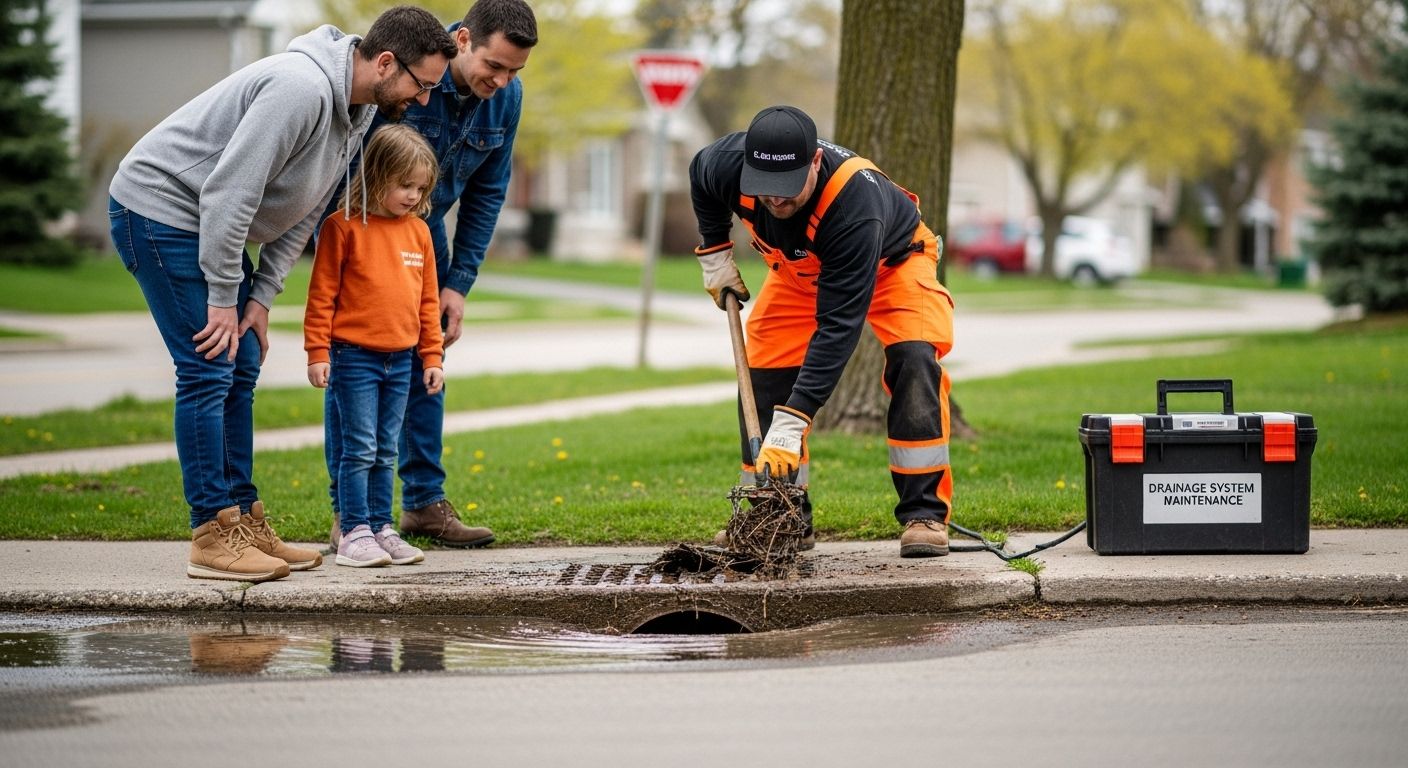
Understanding and implementing these maintenance strategies demonstrates a proactive approach to infrastructure management. By treating sewage and drainage systems as distinct but interconnected networks, Ottawa property owners can protect their investments, contribute to community environmental health, and prevent potentially expensive repair scenarios.
Regular professional assessments remain the most effective way to ensure these critical systems continue functioning efficiently. Property owners are encouraged to develop comprehensive maintenance plans that address the unique requirements of both sewage and drainage infrastructures.
Below is a summary table outlining the recommended maintenance practices for each system, helping Ottawa property owners take proactive steps and avoid costly issues.
| Maintenance Task | Sewage System | Drainage System |
|---|---|---|
| Professional Inspections | Every 3–5 years (recommended) | Seasonally & before extreme weather |
| Key Focus | Septic tank, underground pipes, waste input | Gutters, storm drains, catch basins |
| Primary Prevention Measures | Avoid non-biodegradable waste and chemicals | Remove leaves, debris, and organic matter |
| Special Considerations | Limit water use, avoid grease/chemicals | Maintain landscape grading for flow |
| Typical Problems Prevented | Pipe clogs, system backup, contamination | Blockages, flooding, water accumulation |
Frequently Asked Questions
What is the main difference between sewage and drainage systems?
Sewage systems are closed networks designed to collect and treat wastewater from homes and businesses, while drainage systems are open networks that manage surface water like rain and snowmelt to prevent flooding.
Why is it important to maintain sewage and drainage systems?
Regular maintenance helps prevent costly repairs, protects property values, and ensures compliance with environmental regulations. It also minimizes risks associated with wastewater contamination and flooding.
How often should sewage systems be inspected and maintained?
It is recommended to have sewage systems inspected every 3 to 5 years. Regular maintenance, including pumping the septic tank, is also necessary depending on household size and water consumption.
What are common maintenance practices for drainage systems?
Key maintenance practices for drainage systems include seasonal inspections, removing debris from gutters and storm drains, and ensuring proper landscape grading to direct water away from foundations. Regular cleaning prevents blockages and mitigates flooding risks.
Keep Your Ottawa Property Protected with Professional Sewage and Drainage Solutions
If you feel overwhelmed by the complex networks that protect your home or business from water damage, you are not alone. Small mistakes in differentiating sewage and drainage systems can lead to costly repairs, property depreciation, or even environmental hazards. The article explained how important it is to tell these systems apart and keep both working smoothly, yet regular Ottawa property owners rarely have the time or expertise to catch every risk early. That is where a trusted local team can make all the difference. For more expert insight, browse our Uncategorized Archives – Delta Plumbers | Ottawa for additional resources.
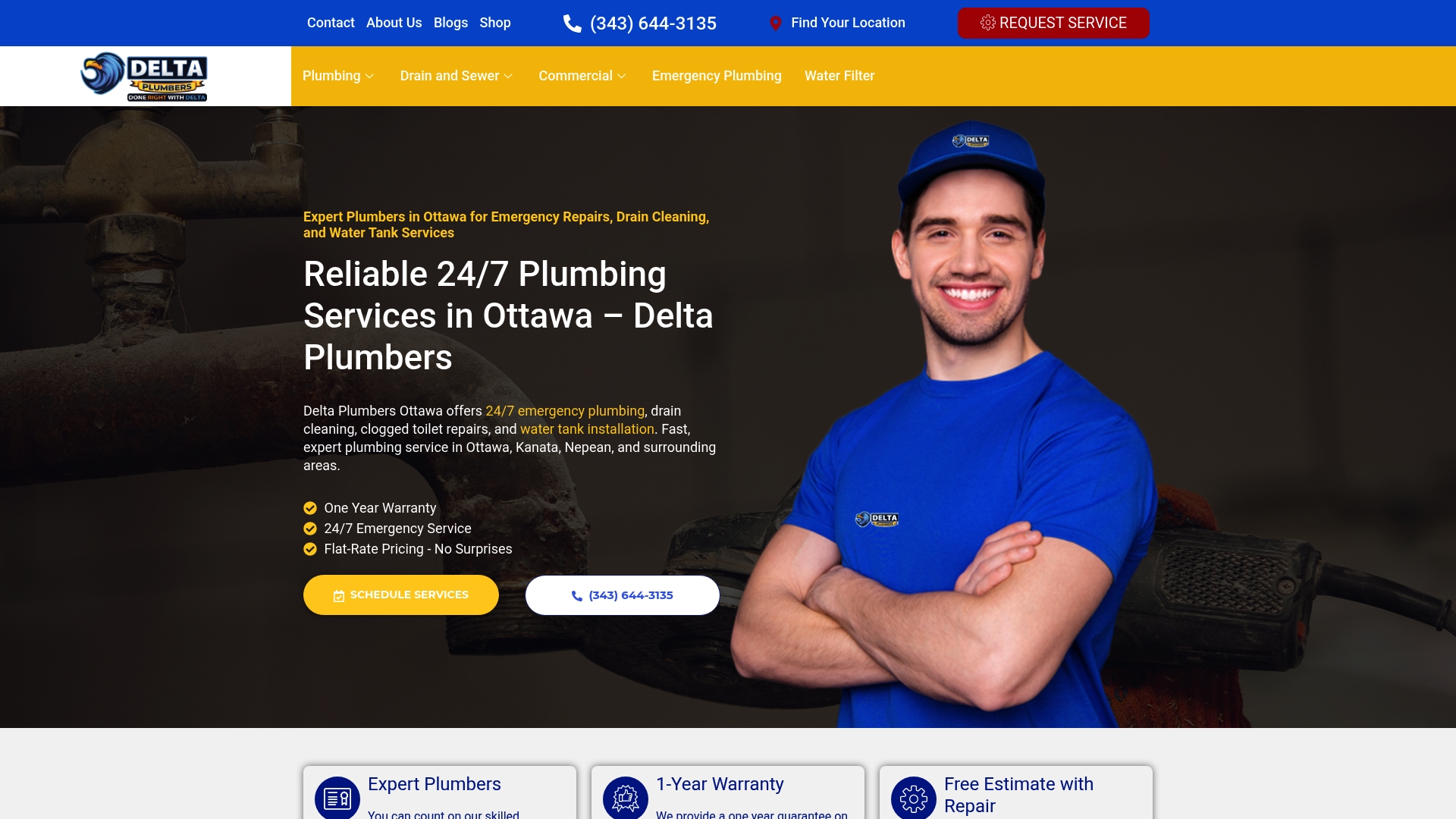
Let Delta Plumbers help turn uncertain plumbing worries into peace of mind. Our licensed professionals are ready for emergencies, yearly checkups, and everything in between. We offer flat-rate pricing, a full warranty, and a reputation for reliable service—exactly what you need when protecting your property’s crucial sewage and drainage infrastructure. Do not wait for a system failure or sudden flood. Visit Delta Plumbers Ottawa now to book your plumbing assessment and discover real solutions for your sewage and drainage concerns.

